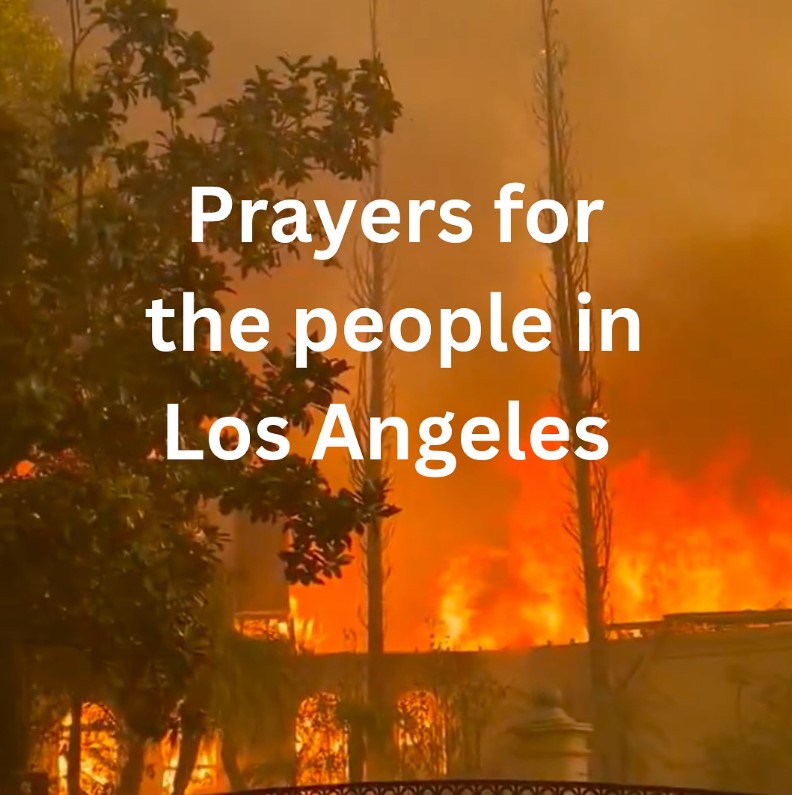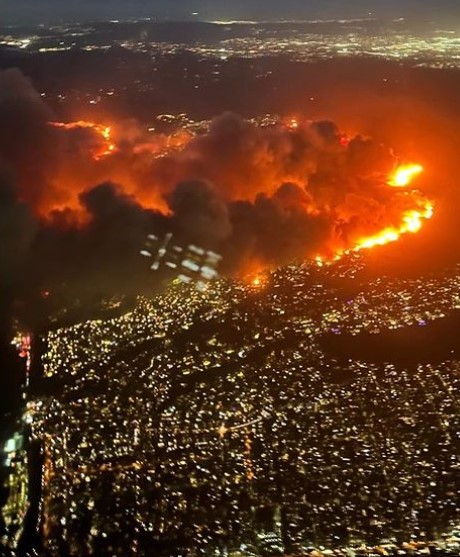As of this writing, roughly 180,000 people are evacuating more than 45 square miles in the Los Angeles area, and our hearts are with them. If you have a way to show support of the families and businesses in need, please do so.

The L.A. fires, in addition to all the damage we know of so far, have resulted in hundreds of lost paintings at artist studios, collector homes, and likely art galleries. Our hope is that this message will serve as a reminder to insure your artwork or make plans to try to protect what you have, as well as encourage you to help if you can.
My dad trained us to understand that if you have to think under pressure and don’t already have a plan, things won’t go as well in the heat of an emergency, or even drama and emotion. But if you try to anticipate situations, perhaps you can recover, or reduce the negative impact.
For many of us who are not in the midst of tragedy, now is the time to take action to make sure you have the best possible plan in case something does happen.
Progressive Insurance says that “art and collectibles may not always be covered through your homeowners policy for their full value. Some insurers may have a sub-limit that applies in the event of a loss, which means your insurer will only cover certain items up to a specified amount. In order to insure art and collectibles for their full value, some insurers will allow you to add these items as a separate endorsement or ‘rider’ to your homeowners, renters, condo, or manufactured home policy. Your insurer may require you to provide a photo or detailed description of the item, and possibly an appraisal.”
Art Studio Considerations
If you had a five-minute notice, what would you grab? Look around and decide what’s absolutely irreplaceable, whether because it’s valuable or sentimental.
The first thing crossing my mind isn’t the stuff we can replace, it’s the stuff we can’t. Things with emotional meaning — in my case, an extensive art collection, a collection of portraits other artists have done of me, and piles of paintings that are my life’s work. What would I do if it was all lost?
I created a list of everything that had meaning, then prioritized that list, and handed out instructions. If there is a fire, if there is time, get these items out to safety first. If there is still more time, add these things that are on the list.
What do you need to do to prepare to leave on a moment’s notice?
What will you regret not having, or not having created a digital copy of?
Most important, of course, is your life and your family. Don’t go into a burning fire and risk your life to save an old photo. It’s not worth the risk. But having a plan in advance is a great idea.
“Art studios give artists the space they need to create as well as a way to store their completed works of art and sell art from the studio,” says the team at Art Insurance Now. “Due to the nature of the work in an art studio, art studio insurance is essential. Risk exposures such as natural disasters and unexpected events like fire, flood, earthquakes, and storms, can cause extreme damage to the building and contents.”
Art Insurance and Documentation
Contact your insurance agency and ask what you need for proper coverage. They may require specific documentation of your collection or your body of work.
My friends in the 2023 Malibu fire had five minutes’ notice. They lost everything. That’s the most likely scenario. In that case, you would at least want records and proof such as digital photos and things stored online or on a server off-site. I have most of my paintings and collection documented, but the list has not been updated in five years. I would at least want to be able to remember those things or have evidence for insurance. (Artwork Archive is a great resource for helping you keep track of your art inventory.)
In your art inventory, include high-resolution photos of all of your paintings and document the size along with any other details you have available.
What if your paintings are lost in a gallery fire?
When you agree to sell your paintings through a gallery, you should have a written agreement that includes things like liability issues and insurance. Keep a digital copy of this online in case it’s ever needed.
Your agreement should also include answers to the following questions:
Will your insurance cover the loss of your art if the gallery has a fire or theft, or is that the responsibility of the gallery?
Do you need an insurance rider on your work that is hanging in a gallery?
What if the art gallery is unable to pay you for the paintings they’ve sold?
One More Note
The horrors of wildfires and other natural disasters are beyond awful. Families need help, and if you have something extra, this is the time to step up and find a charity that will help.
Related Article: How to Inventory Your Art Collection








